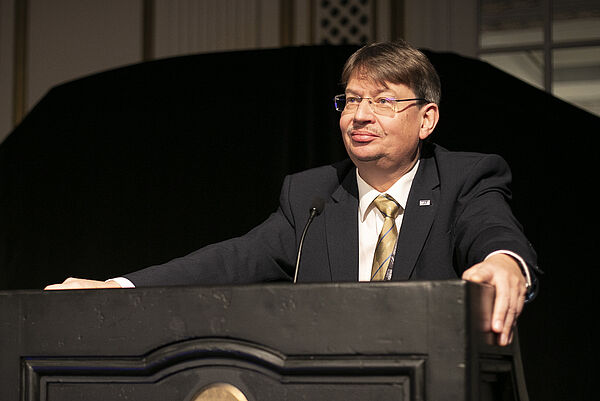With Paypal, credit card or even with your cell phone: Nowadays, there are many different ways to pay in stores, because the trend of digitalization is also increasing in everyday life. However, the most popular payment method still remains cash. It is reliable, anonymous, authentic, and is accepted and widely used around the world. "The cash system" is also very robust against infrastructure failure, for example, in the event of malfunctions, and protects against sometimes simple credit card fraud. However, even the banknote is not one hundred percent secure, as there are always counterfeits in circulation that are not directly detected.
The Institute for Industrial Information Technology (inIT), with a team of scientists from the "Discrete Systems" working group headed by Institute Director Professor Volker Lohweg, has now been conducting research on this important topic for ten years, looking into the production and quality assurance of banknotes, wear and tear, and security at ATMs. They want to develop the simple banknote into a smart banknote.
Professor Lohweg now presented the latest research results from the smartBN (smart banknote) project, whose name stands for "Intelligent protection in payment transactions through smart banknotes," at the Optical Document Security Conference (ODS) in San Francisco. The ODS takes place every two years and is the world's most important and largest conference in the field of document security. As in previous years, inIT was actively involved in the conference and presented a paper on the realization of intelligent banknotes. These are able to store data without violating the anonymity of users because they are equipped with chemical memories developed at the Institute of Food Technology (ILT.NRW) at the OWL University of Applied Sciences. "Our research together with companies is the first in the world to demonstrate a holistic approach to modern banknotes of the future that interact with their environment because, for example, ATMs tell them when they have been paid out. This works optically and chemically," explains Professor Hans-Jürgen Danneel, head of ILT.NRW. Consumers and ATMs could then use the banknote directly to confirm its authenticity and read off how old it is, for example.
Lohweg is also aware of the popularity of cash. "The repeated calls to abolish cash in favor of electronic payment systems are increasingly proving to be an illusion. Nevertheless, it is our task to adapt means of payment to current trends without giving up anonymity. The banknote of the future must therefore exhibit intrinsic intelligence in that, as a product, it discloses information itself at various points, whether at the ATM or at the point of sale," sums up the acknowledged expert on document security. According to Lohweg, the processes developed in the smartBN research project should make banknotes more flexible to use in the future than they have been up to now.
From January 29 to 31, the ODS provided experts from the field with an important opportunity for exchange. Professor Lohweg is pleased about the appreciation of the research activities that the inIT now enjoys at the international conference.


